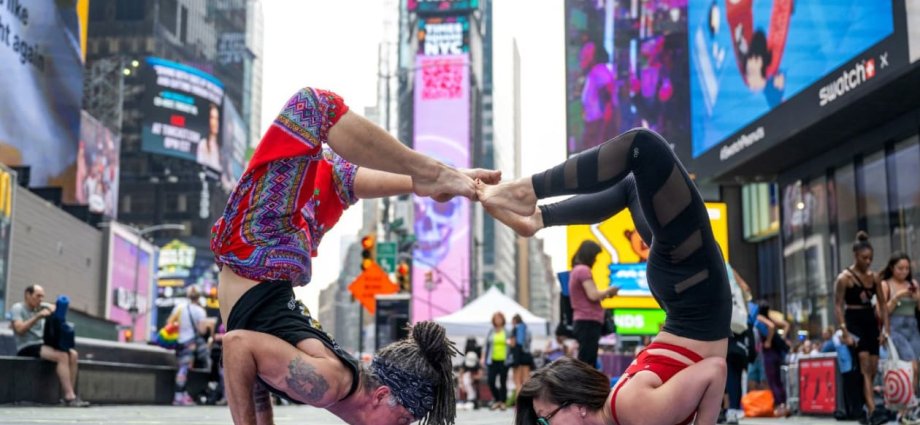Is practising yoga a form of cultural appropriation? The question has arisen in recent years as the yoga industry continues to grow and strange new forms of the practice – from “goat yoga” to “gin and yin yoga” – are introduced.
Yoga practitioners in India have accused the West of whitewashing the spiritual discipline. Yoga has become a “workout session stripped of any kind of cultural background, where you have to show up with $100 Lululemon leggings and an equally expensive mat”, Vikram Jeet Singh, a yoga instructor in Goa, told The South China Morning Post in 2022.
What is cultural appropriation?
It is when someone adopts something from a culture that is not his or her own – a hairstyle, a piece of clothing, a manner of speaking, even a type of exercise.
In 2021, Justin Bieber was accused of cultural appropriation when he sported a new dreadlock hairstyle.
“When I see a white person in mainstream media sporting a black hairstyle, it makes me angry,” Stephanie Cohen, co-founder and legal and political organiser at the Halo Collective, a natural hair organisation, told The Guardian.
Originally derived from sociologists writing in the 1990s, usage of the term cultural appropriation “appears to have first been adopted by indigenous peoples of nations tainted by histories of colonisation, such as Canada, Australia and the United States”, said The Tablet.
“Some argue that cultural appropriation is good,” wrote Ligaya Mishan at The New York Times Style Magazine. These people say cultural appropriation is harmless, and liken it to borrowing from or being inspired by another culture. “But cultural appropriation is not the freewheeling cross-pollination that for millenniums has made the world a more interesting place.”
Unlike cultural exchange, in which there is a mutual interchange, appropriation refers to a “particular power dynamic in which members of a dominant culture take elements from a culture of people who have been systematically oppressed by that dominant group”, according to the EverydayFeminism website.
What’s wrong with it?
It’s often fine to take on aspects of another culture, argued Quartz writer Jenni Avins, whether it’s putting on espadrilles or making coffee with an Italian espresso machine. Simply getting ready in the morning is a “daily act of cultural appropriation and I’m not the least bit sorry about it”, she said.
The problem arises when somebody takes something from another less dominant culture in a way that members of that culture find undesirable and offensive. The point is that the more marginalised group doesn’t get a say, while their heritage is deployed by someone in a position of greater privilege – for fun or fashion, perhaps, and out of a place of ignorance rather than knowledge of that culture.
Wearing espadrilles to work is different from wearing a sombrero to a Halloween party or sending a series of white models down the catwalk wearing their hair in cornrows.
“You are pretending to be a race that you are not and are drawing upon stereotypes to do so,” is how Dr Adrienne Keene of Native Appropriations explained it EverydayFeminism.
When it comes to yoga “what especially annoys me is when Sanskrit words like ‘namaste’ get emblazoned on T-shirts, images of Hindu gods are turned into tattoos, or ‘om’ symbols are printed on yoga mats”, said instructor Nadia Gilani in The Guardian. “It’s cultural appropriation and it’s offensive.”
Can it work the other way around?
Yes, it can and does – but usually in a different way. Often a more marginalised culture will adopt aspects of the stronger in order to fit in, not stand out. Black women, for example, frequently report they feel unable to leave their hair in its natural state. The BBC cited cases of women being told by employers it looks “unprofessional”. Some say they must spend time and money to make it more like “white hair”, HuffPost reported.
The black women in this example are not adopting elements of another culture for fun or even necessarily out of choice, but in order to avoid discrimination by the more dominant group. It all comes down to cultural power, historic and modern.











